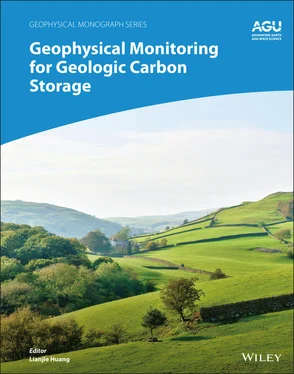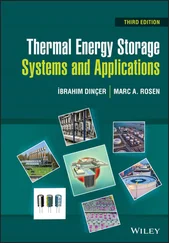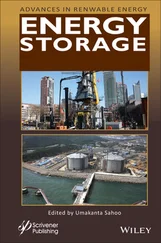Geophysical Monitoring for Geologic Carbon Storage
Здесь есть возможность читать онлайн «Geophysical Monitoring for Geologic Carbon Storage» — ознакомительный отрывок электронной книги совершенно бесплатно, а после прочтения отрывка купить полную версию. В некоторых случаях можно слушать аудио, скачать через торрент в формате fb2 и присутствует краткое содержание. Жанр: unrecognised, на английском языке. Описание произведения, (предисловие) а так же отзывы посетителей доступны на портале библиотеки ЛибКат.
- Название:Geophysical Monitoring for Geologic Carbon Storage
- Автор:
- Жанр:
- Год:неизвестен
- ISBN:нет данных
- Рейтинг книги:4 / 5. Голосов: 1
-
Избранное:Добавить в избранное
- Отзывы:
-
Ваша оценка:
- 80
- 1
- 2
- 3
- 4
- 5
Geophysical Monitoring for Geologic Carbon Storage: краткое содержание, описание и аннотация
Предлагаем к чтению аннотацию, описание, краткое содержание или предисловие (зависит от того, что написал сам автор книги «Geophysical Monitoring for Geologic Carbon Storage»). Если вы не нашли необходимую информацию о книге — напишите в комментариях, мы постараемся отыскать её.
Geophysical Monitoring for Geologic Carbon Storage
Volume highlights include: Geophysical Monitoring for Geologic Carbon Storage
The American Geophysical Union promotes discovery in Earth and space science for the benefit of humanity. Its publications disseminate scientific knowledge and provide resources for researchers, students, and professionals.
Geophysical Monitoring for Geologic Carbon Storage — читать онлайн ознакомительный отрывок
Ниже представлен текст книги, разбитый по страницам. Система сохранения места последней прочитанной страницы, позволяет с удобством читать онлайн бесплатно книгу «Geophysical Monitoring for Geologic Carbon Storage», без необходимости каждый раз заново искать на чём Вы остановились. Поставьте закладку, и сможете в любой момент перейти на страницу, на которой закончили чтение.
Интервал:
Закладка:
Seismic monitoring can use active seismic surveys and/or microseismic events induced by CO 2injection and migration. Microseismic monitoring uses sensors/geophones deployed on the surface covering the monitoring region, and/or sensors/geophones in one or more boreholes to monitor induced microseismic events smaller than what surface seismic arrays can detect. For cost‐effective microseismic monitoring, we need to understand how many sensors/geophones are needed, and how to distribute them spatially to monitor targets of interest, such as the CO 2storage reservoir, caprock, faults, and so on. In Chapter 4, Chen and Huang present a methodology to determine the optimal number of geophones using a surface seismic monitoring network or a borehole geophone array for cost‐effective monitoring of target regions. They determine the optimal number of seismic stations based on the trade‐off curve of the event location accuracy versus the total number of seismic stations. They design an optimal microseismic monitoring network based on widely accepted guiding principles, and the relationship between the location accuracy of microseismic events and the total number of seismic stations. The method is based on the trade‐off curve between the mean location accuracy and the number of seismic stations. In practical applications, three‐component geophones can provide more useful information of shear‐wave signals to improve microseismic monitoring compared with one‐component geophones.
Active seismic monitoring uses time‐lapse seismic reflection/transmission data. The underlining physical principle of this monitoring technique is based on the effects of (supercritical) carbon dioxide on subsurface elastic parameters. CO 2injection and migration alter elastic parameters such as compressional and shear velocities, density, and seismic attenuations in isotropic geologic formations, and also anisotropic parameters in anisotropic geologic formations. Studies of rock physics on the effects of CO 2injection and migration form the foundation of time‐lapse seismic monitoring for geologic carbon storage. In Chapter 5, Nakagawa and Kneafsey present laboratory measurements of the seismic response of fractured sandstone during geologic carbon sequestration. They employ a modified resonant bar technique to make laboratory measurements, and give the dynamic Young's modulus, shear modulus, and attenuation in core samples with supercritical CO 2injected, within a sonic frequency band of ~1 kHz to ~2 kHz. They use X‐ray CT to understand the distribution of supercritical CO 2injected into the core samples. Their laboratory experiment results show that changes in seismic‐wave velocities and attenuations strongly depend on the fracture orientation. In Chapter 6, Delaney et al. use laboratory ultrasonic experiments to study rock physics properties of rhyolite and carbonate samples, and the effects of pressure, temperature, porosity, and fluid saturation on their rock properties. In their experiments, they vary the pore‐filling fluids, effective pressures, and temperatures. They find that the framework composition, porosity, heterogeneities, temperature, effective pressure and pore‐filling fluids are first‐order controls on trends in elastic parameters and wave attenuation. Their findings could provide insight on using amplitude versus offset (AVO) for seismic monitoring. Their results show that the quality factor of compressional waves measuring compressional‐wave attenuation is inversely proportional to rock porosity and is weakly dependent on temperature. These results reveal the relationships of the ultrasonic velocity and the quality factor as a function of both temperature and effective pressure.
Time‐lapse 3D seismic monitoring, or 4D seismic monitoring, is considered as the most effective tool for 3D subsurface monitoring of CO 2injection and migration. However, time‐lapse 3D seismic surveys and data processing are costly and time consuming. For the similar purpose of optimal design of a microseismic monitoring network, Gao et al. in Chapter 7introduce a numerical method for designing optimal time‐lapse seismic monitoring surveys by analyzing sensitivities of elastic waves in isotropic and anisotropic media with respect to reservoir geophysical property changes. Conventional seismic surveys are designed based on seismic‐wave illumination of the entire subsurface imaging region, and require a large number of sources and receivers to produce high‐resolution images of the subsurface. By contrast, time‐lapse seismic monitoring is not designed to image the entire subsurface region, but only the target monitoring regions, such as the CO 2storage reservoir, caprock, and faults. Therefore, time‐lapse seismic monitoring needs only seismic information from such regions, rather than from the entire subsurface region. The optimal design of time‐lapse seismic surveys is based on elastic‐wave sensitivity analysis, that is, numerical modeling of elastic‐wave changes with respect to changes of geophysical properties within target monitoring regions. The method numerically solves the elastic‐wave sensitivity equations obtained by differentiating the elastic‐wave equations with respect to geophysical parameters, such as density, compressional‐ and shear‐wave velocities, and saturation parameters, in isotropic and anisotropic media. Receivers should be placed in surface regions for surface seismic surveys or borehole locations for vertical seismic profiling (VSP) surveys with significant values of elastic‐wave sensitivity energies. The number of receivers needed for cost‐effective time‐lapse seismic monitoring is only a fraction of a regular 3D seismic survey.
The 3D surface seismic monitoring has the advantage of monitoring a large subsurface area to track CO 2migration in the 3D space. However, seismic imaging/monitoring resolution decreases with the depth, particularly for CO 2storage at geologic formations at several kilometers in depth. Compared with surface seismic monitoring, VSP monitoring improves seismic imaging/monitoring resolution in the deep region when receivers are placed in the deep region of the subsurface. The image resolution of VSP monitoring is usually twice that of surface seismic monitoring. The limitation of VSP monitoring is that the lateral monitoring range is smaller than surface seismic monitoring.
VSP surveys use active seismic sources at various offset locations (offset VSP), or along various walkway lines from the monitoring well (walkaway VSP), or using a 2D surface source distribution (3D VSP). Offset VSP monitoring uses only a few offset source points, and has the lowest cost among the three different types of time‐lapse VSP survey. However, offset VSP can monitor only in the sparse azimuthal directions along a monitoring well to offset source directions. 3D VSP monitoring is the most expensive among the three VSP monitoring approaches, with the highest spatial coverage of the monitoring region. The walkaway VSP monitoring is the trade‐off between the offset VSP monitoring and 3D VSP monitoring.
In Chapter 8, on offset VSP monitoring, Zhang and Huang study the capability of offset VSP imaging for monitoring CO 2injection/migration, and present monitoring results at the Aneth CO 2‐EOR (Enhanced Oil Recovery) field in Utah. The offset VSP monitoring uses a permanent geophone string with 60 levels and 96 channels cemented into a monitoring well. Because of uncertainties in the offset VSP source locations during repeat VSP surveys, they present a method to use travel times of the downgoing VSP waves and double‐difference tomography to invert for the “true” VSP source locations. This approach addresses the source repeatability issue in practical offset VSP monitoring. Zhang and Huang apply wave‐equation migration imaging of the preprocessed and balanced time‐lapse offset VSP data from the Aneth CO 2‐EOR field and the inverted “true” VSP source locations to infer the reservoir changes. To reduce the imaging noise of the offset VSP data, they employ an angle‐domain imaging condition with reflection angle constraint for different offset VSP data sets to produce time‐lapse migration images, showing reservoir changes caused by CO 2injection/migration along different offset directions are different, indicating an anisotropic CO 2migration pattern relative to the injection wells.
Читать дальшеИнтервал:
Закладка:
Похожие книги на «Geophysical Monitoring for Geologic Carbon Storage»
Представляем Вашему вниманию похожие книги на «Geophysical Monitoring for Geologic Carbon Storage» списком для выбора. Мы отобрали схожую по названию и смыслу литературу в надежде предоставить читателям больше вариантов отыскать новые, интересные, ещё непрочитанные произведения.
Обсуждение, отзывы о книге «Geophysical Monitoring for Geologic Carbon Storage» и просто собственные мнения читателей. Оставьте ваши комментарии, напишите, что Вы думаете о произведении, его смысле или главных героях. Укажите что конкретно понравилось, а что нет, и почему Вы так считаете.












